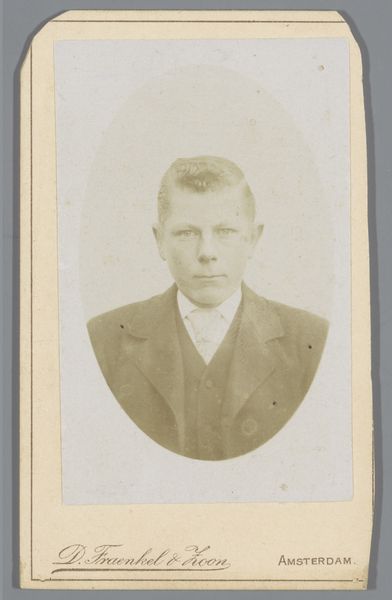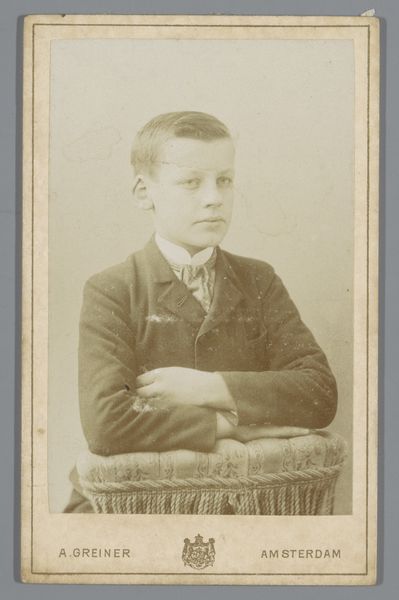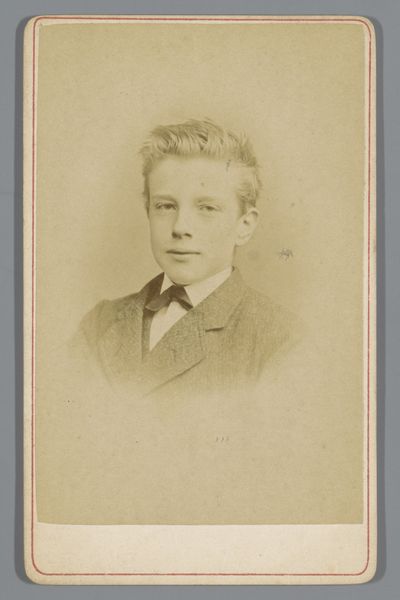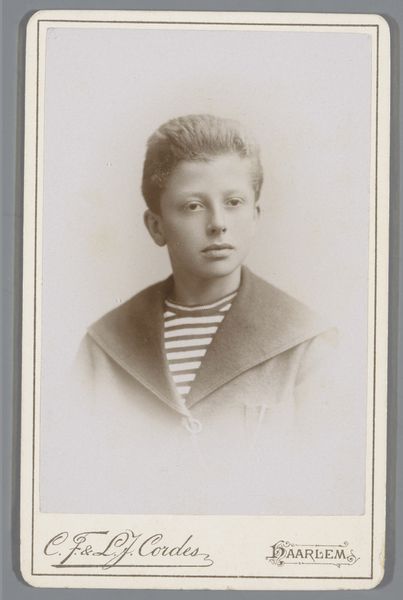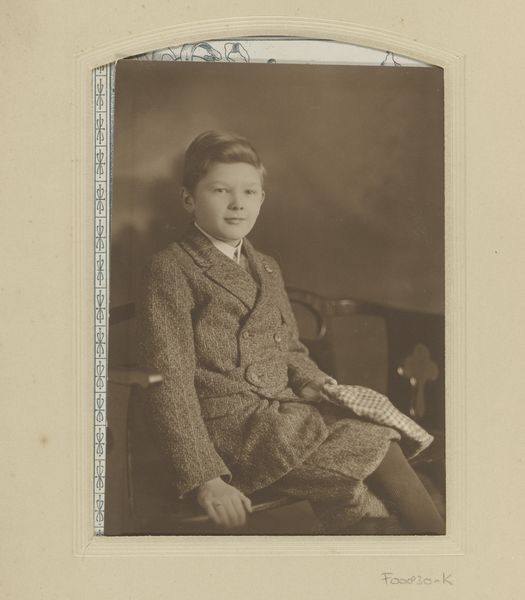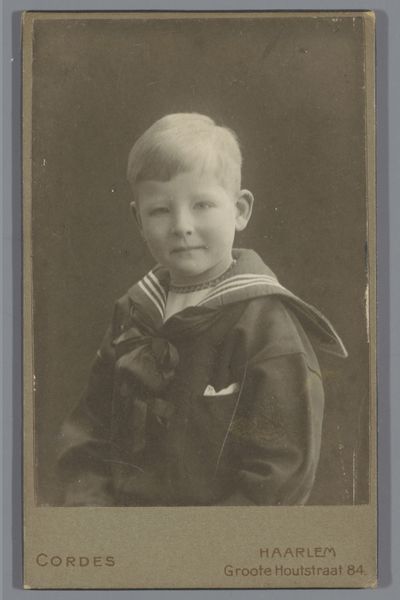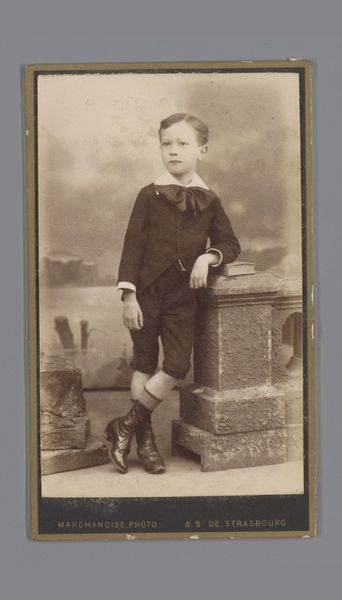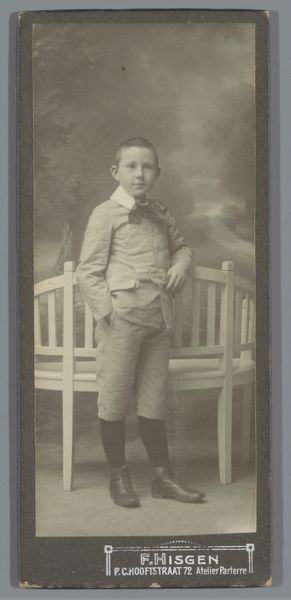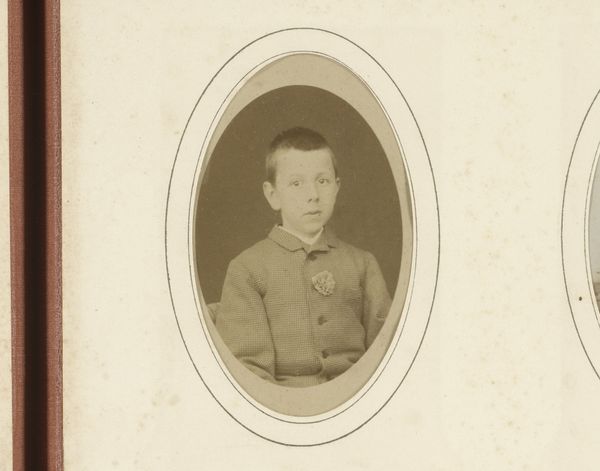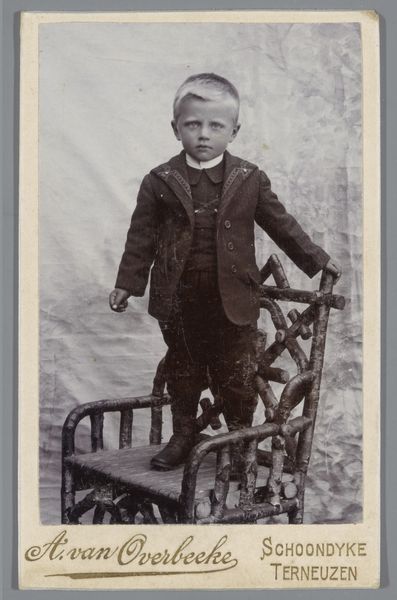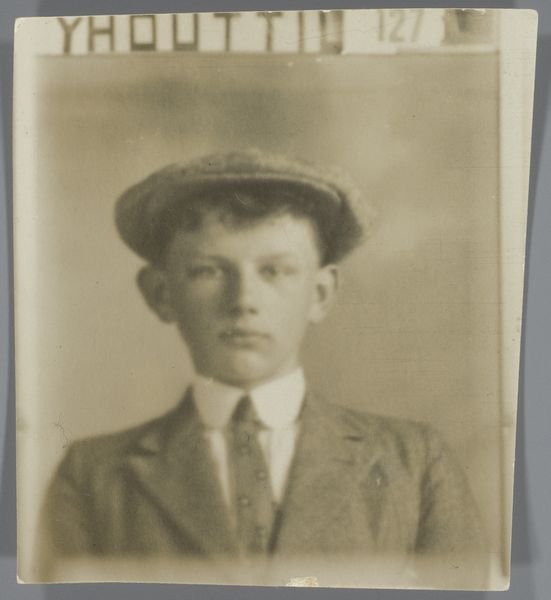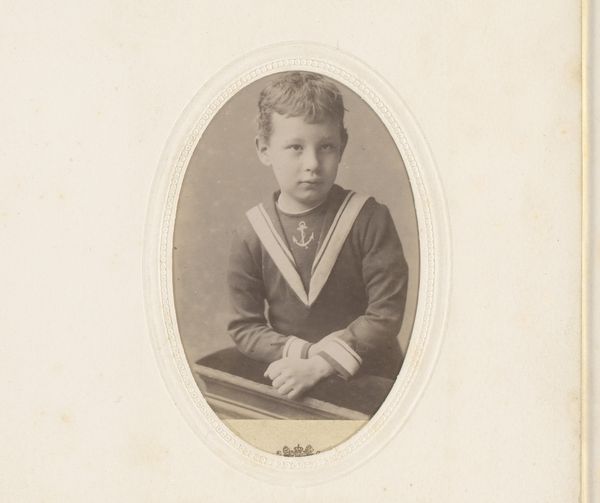
photography, pencil, gelatin-silver-print
#
portrait
#
17_20th-century
#
self-portrait
#
photography
#
historical photography
#
pencil
#
gelatin-silver-print
#
19th century
Dimensions: height 38 mm, width 31 mm
Copyright: Rijks Museum: Open Domain
Curator: This photograph, possibly titled "Portret van een jongen," and credited to Jan Gottfried Stütner, dates sometime between 1913 and 1926. It's a gelatin-silver print. Editor: My first impression is one of slightly unsettling formality. The boy’s stiff posture, the dark background… it almost feels like a still from an old film. There's an interesting tension in such manufactured innocence. Curator: The materiality speaks volumes. Gelatin silver prints were a standard photographic process at the time, widely accessible, allowing for relatively sharp images, although the paper processing and chemistry for this time might speak volumes about consumerism in that particular cultural context. But beyond the technique, note the inscription "WHODUTTIO" on top of the picture—is it part of the making, some annotation about the subject? Editor: That’s a fantastic detail. It immediately turns my mind to questions of identity and the cultural codes this boy inhabits. The almost bureaucratic text juxtaposed with the portrait evokes a sense of… cataloging, doesn't it? We could speculate whether the picture was taken by his parents, in which case these labels have some reference with the photographer that gave place for production. Curator: Precisely! The printing itself would have been a process subject to specific, industrial constraints and cultural choices. The suit suggests some sort of middle-class aspiration as well, the jacket's weaving texture giving a certain appeal beyond the rigid constraints of the photograph. Editor: And the boy’s gaze is direct, almost challenging. He's aware of being observed, and I wonder what inner world that seemingly expressionless face conceals. Children were commonly presented under specific archetypes, like the cherub, the "working-class child", the intellectual... and I see that social and psychological tension right here. Curator: I completely agree. Analyzing the wear and tear of the photograph, the aging of the gelatin, even the possible imperfections in the developing, can illuminate aspects of its life cycle. For instance, how many times has it been handled? Who kept it? Editor: Exactly! Thinking about the survival of symbols like dress and photography is crucial. Overall it feels like such a revealing portrait that carries the symbols of its era. Curator: Indeed, it has prompted some interesting thinking about photography, the process behind the making and printing. Editor: A truly interesting and engaging picture—revealing that cultural background and all the psychological layers behind it.
Comments
No comments
Be the first to comment and join the conversation on the ultimate creative platform.

